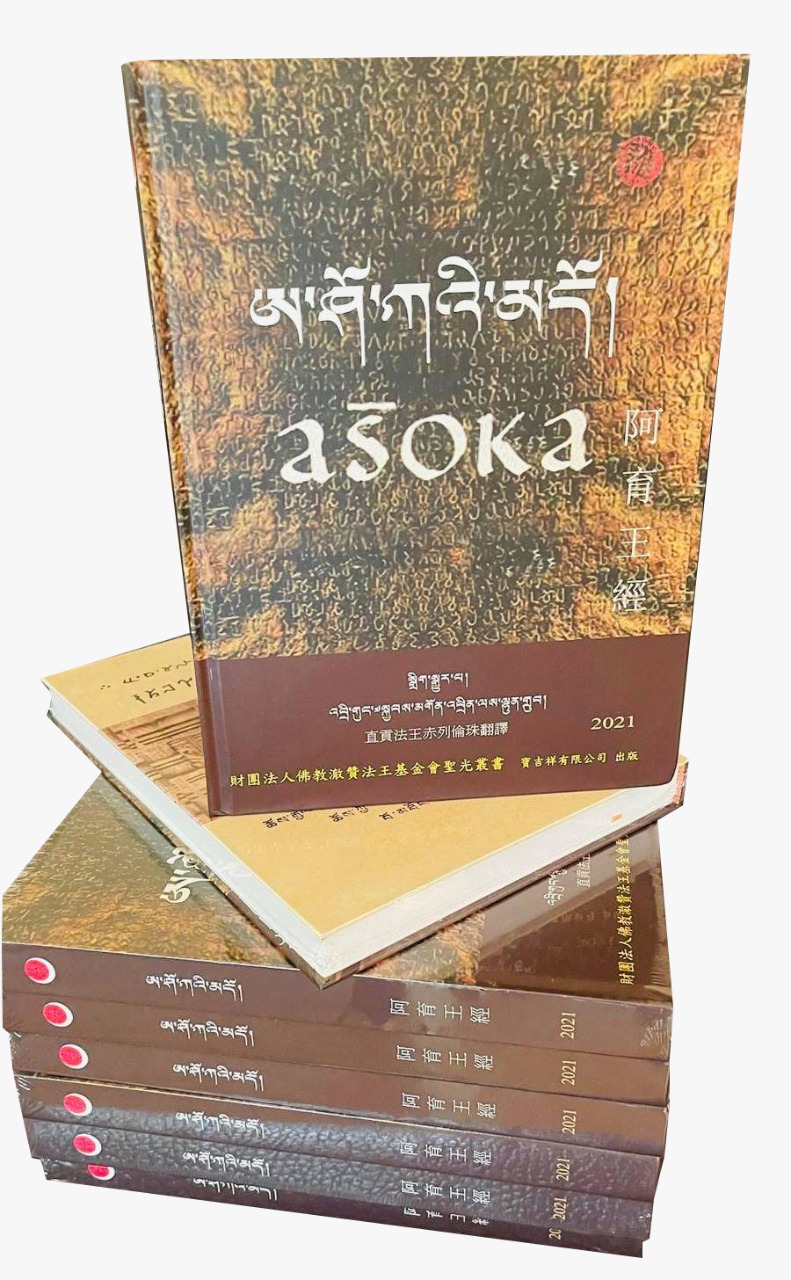

In June 2021, His Holiness finalized and published his Chinese-to-Tibetan translation of “The Narrative of Ashoka” (阿育王經Ashokavadana) in Taiwan. The original “Narrative of Ashoka” is a Sanskrit text that describes the life stories of King Ashoka and his conversations with his teacher Upagupta. In 2005, His Holiness started translating this text which survives in Classical Chinese into Tibetan. (This text was never translated into Tibetan before). Over the past 15 years, using his very limited free time from his extremely busy schedule, His Holiness overcame many challenges and persisted in translating few paragraphs a time and eventually completed this translation.
In our short interview with His Holiness, he explained the significances of “The Narrative of Ashoka” (Ashokavadana) and why he translated it into Tibetan.
Q:Why did you choose to overcome all the difficulties to complete this translation into Tibetan? What is so special about “The Narrative of Ashoka” (Ashokavadana) ?
A:First, King Ashoka is the first King in India who ruled almost all of the Indian subcontinent. During his ruling, he spent great effort in spreading Buddhism across ancient Asia, including Southeast Asia, Middle East, as well as Holland and Greece. He is the greatest King in India’s history and an extremely important historical figure. This is the first reason.
Second, in each of the 10 chapters of “The Narrative of Ashoka” (Ashokavadana) , a story regarding a specific dependent arising is told. All 10 chapters are named as “the dependent arising of such and such .” For example, Chapter 2 is “the dependent arising of meeting Upagupta.” Given that the doctrine of dependent arising is the most fundamental teaching of Buddhism, this whole sutra centers around it.

Third, Upagupta, the teacher of King Ashoka is the other main figure of “The Narrative of Ashoka” (Ashokavadana). Upagupta is considered the Fourth Patriarch holding the Buddha’s lineage. Among all of Buddha Shakyamuni’s disciples, Upagupta is the best in training disciples according to their mental capacities. Many conversations between King Ashoka and Upagupta are documented in “The Narrative of Ashoka” (Ashokavadana) . In the last chapters, specific tips on how to train disciples with different personalities and mental capacities are elaborated.
Fourth, Upagupta took King Ashoka on a pilgrimage trip to major Buddhist sites. In this trip, Upagupta spoke of each sacred site in details and told stories of what the Buddha did there, which I consider as the most precious part of the Buddha’s life stories. In
addition, at each site, King Ashoka made generous offerings and built stupas as well as monuments. Due to his generosity, nowadays, we are able to see and visit these sites.
Because of the above mentioned significances, despite of the difficulty for me to translate Classical Chinese into Tibetan, I regardless chose to undergo this task and produced a complete Tibetan translation of “The Narrative of Ashoka” (Ashokavadana).
Q: In your foreword, you mentioned that contemporary Tibetan and Old Tibetan are both used in your translation. Can you talk about your intention behind this choice?
A: I used contemporary Tibetan style to translate King Ashoka’s speech and the Old Tibetan style utilized during the Tibetan Empire’s period to translate Upagupta’s speech. Sentences in Old Tibetan are very succinct. Their grammar and style also differ significantly from contemporary Tibetan. My intention to use two different styles of Tibetan is to help the readers to distinguish who is speaking in a conversation. This is a novel attempt. As far as I know, no one else tried to integrate the more than 1000-year-old Old Tibetan style into contemporary translations.
Orders for the Ashoka can be sent to:
Songtsen Library
Center for Tibetan and Himalayan Studies
P.O. Kulhan
Sahastradhara Road
Dehra Dun 248001
UA/India
Phone : +91 135 2607810 and +91 135 2607811
Fax: +91 135 2607813
E-mail: songtsenlibrary@gmail.com
Website: www.songtsenibrary.net/

